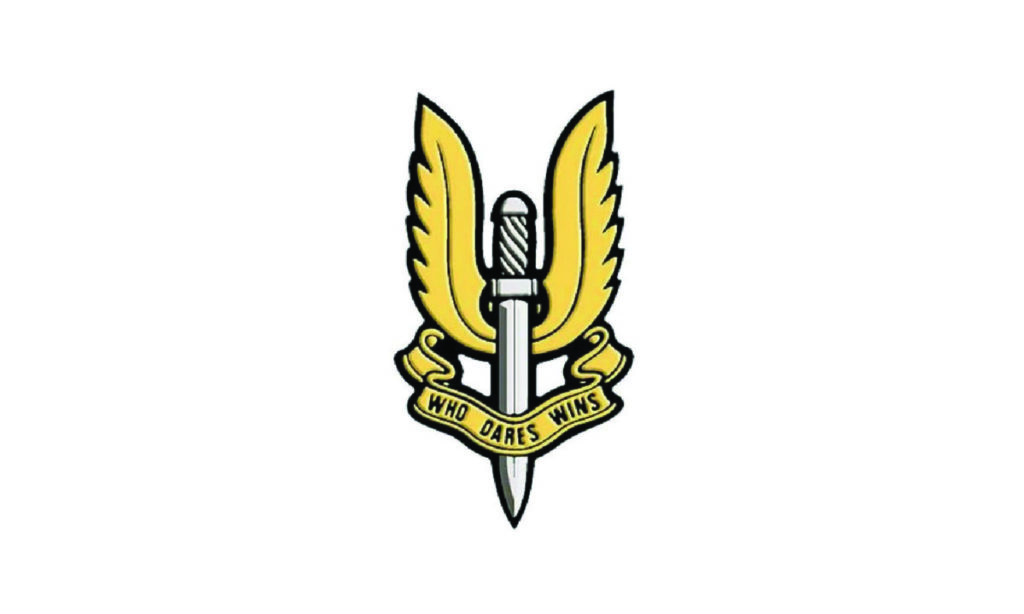Although the British SAS, or Special Air Service, was not the first unit to adopt the MP5, it can certainly lay claim to being the unit that made the MP5 internationally famous. The SAS enjoys notoriety in the modern world for its counterterrorism exploits, but it also has just about the longest and most contiguous history of any currently active special operations unit.
Founded in 1941, principally as a raid and reconnaissance unit, the SAS’s operational history begins in the sands of North Africa during World War II, where it was deployed to fight against Rommel’s Afrika Korps. Despite a rough start, the SAS soldiers emerged from their time in Africa with a reputation for being extremely tough, unpredictable fighters. Aided by the Long Range Desert Group, they were a threat to emerge at any point and at any time to strike targets ranging from Luftwaffe airfields to German and Italian supply lines. The unit went on to support Allied missions throughout Europe for the duration of the war, waylaying German forces at critical times, and quietly making a name for itself. By the war’s end, SAS operators had cemented their unit’s permanence in the British order of battle. Not only so, but with their success fostering expansion as the war progressed, many foreign SAS contingents were founded, members of whom would contribute critically to the establishment of NATO special operations units in the post-war world.
During the Cold War, the SAS was probably the most active special operations unit in NATO. Britain’s far flung interests kept it busy. Among its more prominent missions were action in Malaysia, Oman, and the Falkland Islands. During the Falkland Crisis, the SAS ran the gamut of its missions, from reconnaissance to direct action, and saw nearly continuous conflict. The Gulf War provided opportunity for the unit to conduct a similar litany of missions, and afterward a rash of publications shed light on some of them — most notably the “Great Scud Hunt,” which sent the unit scouring vast swathes of empty desert. The post-9/11 wars in Afghanistan and Iraq have likewise kept the SAS gainfully employed, and today most Commonwealth countries have their own SAS modeled after, and sometimes working directly with, its British forerunner.
While the SAS excels at all of its specialized missions, its demonstrated prowess in hostage rescue is what made it world famous. In particular, its mission at the Iranian Embassy in London on May 5, 1980 — Operation Nimrod — put the SAS on the front page of virtually every newspaper in the world, and on the flickering screen of every television. After the SAS eliminated terrorists and rescued hostages on that fateful day, its heavily photographed new armament, the Heckler & Koch MP5, became an international sensation, and was soon a hallmark of special operations units everywhere. Few, if any, pictures have done as much to promote a unit or a weapon as that of the gas mask-wearing SAS operator suspended from a rope, preparing to breach the embassy wielding an MP5 with mounted flashlight. Myriad books, magazines, and T-shirts have reprinted that image, while video games and comic books have been created with the SAS and MP5 as their central themes. Perhaps never before have a unit and a firearm been so closely associated.
Largely due to that association, forged through Operation Nimrod, since 1980 the MP5 has found its way into tens of thousands of special operations units, hostage rescue teams, and police departments worldwide. Notwithstanding that the SAS continues to adapt, and that the primacy of its association with the MP5 may eventually wane, this now ubiquitous HK weapon has plenty of life left in it. Many special operations armories in the West still have a stable of MP5s, and with proper care these firearms will remain the strikingly reliable, precise, and effective tools they were designed to be, fit for application to a variety of challenging scenarios.

SAA were ahead of their time a great group of fighting men not to be messed with I to have an MP5 clone made by you shoot her all the time love it
Great write up on the SAS lineage! Looking forward to the next blog post!
Very well done. I have one of the MP-5clones,that you sell.VERY WELL DONE!!!!!!
Not to mention that they used the G-3K, as the G-3K is still in British military arsenals, and were the first to use the super short MC-51 which was too short for caliber.